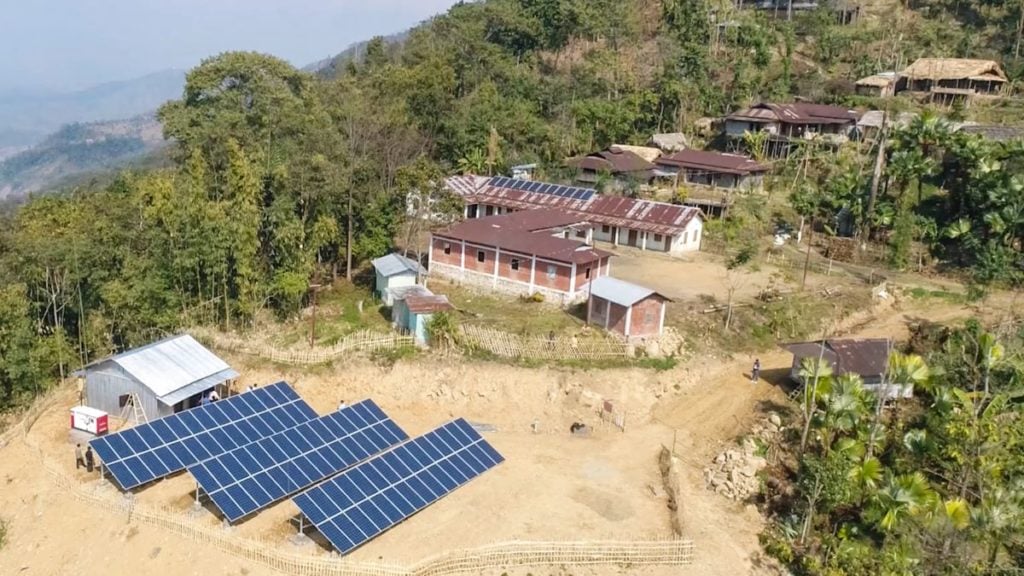Features, Editors’ Blog, Interviews, Long Reads
 Modules used in the scheme must satisfy India’s domestic content requirement. Image: Hamara Grid
Modules used in the scheme must satisfy India’s domestic content requirement. Image: Hamara Grid
The Indian government has released guidelines for a rooftop solar scheme, offering low cost electricity to ten million households.
According to a document published by the Ministry of New and Renewable Energy (MNRE), the PM – Surya Ghar: Muft Bijli Yojana scheme has an investment budget of INR750.2 billion (US$8.97 billion) and is to be implemented until FY2026-27. Of the total financial outlay, INR675 billion will be used as the Central Financial Assistance (CFA) component for residential households, while INR49.5 billion will be assigned as incentives for distribution companies.
This article requires Premium SubscriptionBasic (FREE) Subscription
Unlock unlimited access for 12 whole months of distinctive global analysis
Photovoltaics International is now included.
Regular insight and analysis of the industry’s biggest developments
In-depth interviews with the industry’s leading figures
Unlimited digital access to the PV Tech Power journal catalogue
Unlimited digital access to the Photovoltaics International journal catalogue
Access to more than 1,000 technical papers
Discounts on Solar Media’s portfolio of events, in-person and virtual
Or continue reading this article for free
MNRE said that for the purpose of CFA, residential rooftop solar systems will connect to the grid. The systems will be tagged to a residential power connection of a local distribution company and will only include installations on a roof, terrace, balcony or elevated structure.
The modules used in the scheme must satisfy India’s domestic content requirement. Modules must be made from domestically manufactured cells.
Earlier this year, PV Tech Premium examined India’s residential rooftop solar additions announced in the interim budget, and discussed the importance of policy clarity in achieving the country’s energy transition goals.
The PM – Surya Ghar: Muft Bijli Yojana scheme looks to provide this clarity, and to help provide free or low-cost electricity to one million households, and develop the required enabling ecosystem for rooftop solar projects such as regulatory support, manufacturing facilities, a supply chain, vendor network and operation and maintenance facilities.
Meanwhile, the existing Phase II Grid Connective Rooftop Solar Programme, having a budgetary outlay of INR118.1 billion until FY2025-26, will be continued until the launch of the new scheme and will be subsumed in the new scheme after the introduction.
Towards 30GW of rooftop solar capacity
These schemes are part of the Indian government’s effort to install 30GW of rooftop solar capacity by FY2026-27.
Earlier this week, MNRE published its latest figures for clean power capacity additions in India, which show that the country added 15GW of new solar capacity in the 12 months to the end of March 2024. The MNRE’s latest capacity addition figures also compare favourably to historic annual deployment figures from other sources, with the 15GW being the highest for any 12-month period.
These installations have pushed India’s total operating solar capacity to 81.8GW. Of this total capacity, ground-mounted utility-scale plants account for 64.4GW, over three-quarters of the total capacity. Rooftop solar projects account for 11.9GW; off-grid projects account for 3GW; and what the MNRE calls “hybrid projects,” those that include solar alongside other forms of power generation, account for 2.6GW.
PV Tech publisher Solar Media will be organising the Solar Finance & Investment Asia Summit in Singapore, 24-25 September. The event will bring together the most influential leaders representing funds, banks, developers, utilities, government and industry across the Asia-Pacific region on a programme that is solutions-focused from top to tail. For more information, including how to attend, please check the official website.
Returning after a short hiatus, the re-launched 8th Annual Solar Finance and Investment Asia Summit brings together the most influential leaders representing funds, banks, developers, utilities, government and industry across the Asia-Pacific region on a programme that is solutions-focused from top to tail.
Understanding PV module supply to the European market in 2025. PV ModuleTech Europe 2024 is a two-day conference that tackles these challenges directly, with an agenda that addresses all aspects of module supplier selection; product availability, technology offerings, traceability of supply-chain, factory auditing, module testing and reliability, and company bankability.
>>> Read full article>>>
Copyright for syndicated content belongs to the linked Source : PV Tech – https://www.pv-tech.org/indias-mnre-unveils-guidelines-for-rooftop-solar-subsidy-scheme/






























